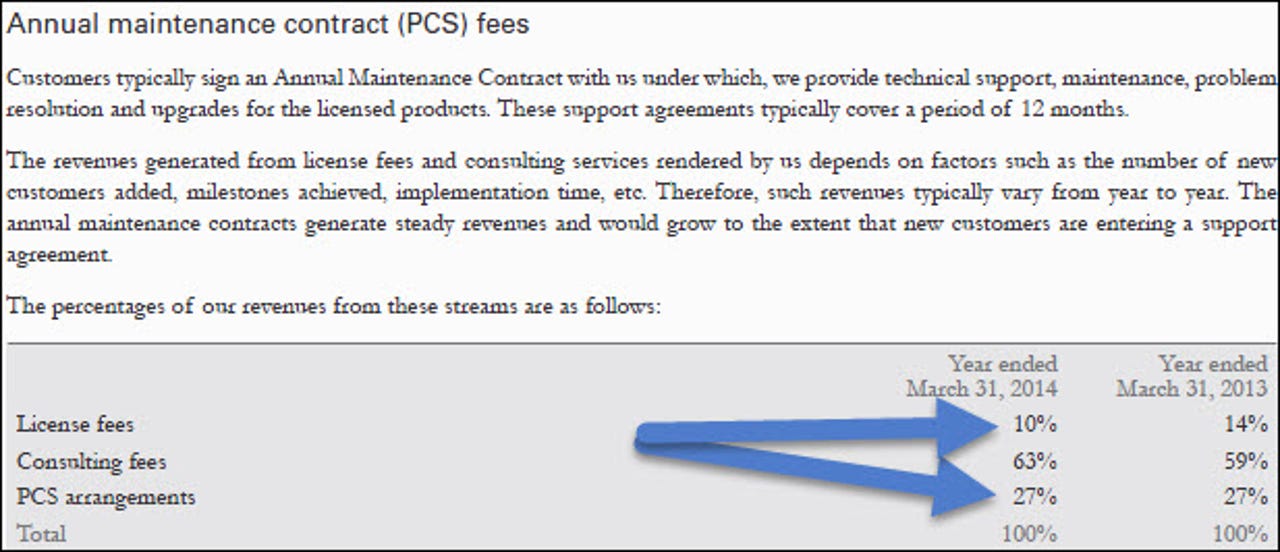Danger zone: Enterprise maintenance and support

Recently, a client asked for advice on whether to continue paying on-premise maintenance and support to a major software vendor. Support is a complicated issue for many IT organizations, with the pros and cons generally as follows:
Why vendor-supplied enterprise support is valuable
- Avoiding risk: When the system has problems, you know who to call
- Access to upgrades: As the vendor releases fixes and new features, you're on the list
- Peace of mind: Keeping strong ties with the software provider can make a difference, especially when your business depends on that relationship
Reasons to avoid vendor support contracts
- High cost: With support fees hovering around 20 percent of the license cost, you could buy a new system every four or five years
- Economic waste: Especially in mature IT environments, you may pay high fees and realize little practical benefit
- Incomplete coverage: The vendor may refuse to support customizations, forcing you to make alternative arrangements, despite paying for the contract
Accenture [PDF] notes that, "each year businesses spend approximately $12 billion on maintenance fees for un-used software," adding another dimension to the debate. Advocating the vendor side, McKinsey [PDF] warns software companies about offering concessions to buyers, saying the "net effect of software maintenance discounts can be significant."
Given these factors, a mix of tangible and emotional decisions complicates the question of support. Similar to insurance, enterprise buyers should weigh quantifiable costs and potentially painful scenarios against the peace of mind that comes with coverage.
Why the big deal? Large software vendors, like Oracle and SAP, earn significantly more revenue from support and maintenance than from software license sales. In addition, these maintenance revenues come with profit margins in the range of 90 percent. A quick look at financial statements explains the importance of maintenance to the enterprise vendors.
Oracle's annual report [PDF, page 40] for 2013-2014 includes the following table:

As the numbers show, Oracle's maintenance contract revenue is approximately 2.7 times higher than its revenue from software license fees. In addition, the text explains that maintenance revenue is more consistent than license fees.
SAP's financial statements for 2013-2014 show a similar pattern. The numbers tell us that SAP's support revenue is approximately 2.1 times its license revenue:
SAP and Oracle are hardly alone with these ratios between software and support. Many on-premise software vendors are in this situation, especially as their customer base gradually shifts to cloud software.
Cloud providers, like Workday or salesforce.com, typically offer a subscription price that includes software and support packaged together. However, it is important to know that cloud is not a panacea because, eventually, this all-in price can exceed on-premise costs for similar software.
Knowing there is no simple or easy answer, I asked two respected analysts for their comments. Each negotiates license and support agreements on behalf of enterprise buyers, so their viewpoints are highly informed.
Ray Wang, founder of industry analyst firm Constellation Research, said,
Support and maintenance is the crack of the on-premises world. The challenge is when vendors move from a ratio of new license to maintenance ratios of 1:1 to 1:3. High maintenance numbers are a sign that the company has stopped innovating. This is a serious issue because low, new license growth is the death knell for a software company.
Wang offers this advice to buyers:
Avoid companies that rely too much on maintenance by migrating, if possible. Otherwise, work hard to negotiate maintenance or move to third party support.
I also asked Frank Scavo, industry analyst and President of consulting firm Strativa, for his views:
The support and maintenance business is a cash cow for the traditional enterprise software vendors.
But, most of that money goes to fund new development and, increasingly over the past decade, to fund acquisitions. My problem, though, is that a customer is interested in those new products, the vendors often charge for them. So, the customer is paying twice: once by paying maintenance, and again if the customer wants the new products that the vendor funded with maintenance dollars.
Many customers question the value they are getting from maintenance. Over the long run, I don't think this model is sustainable, especially when compared to cloud vendors that are able to keep customers up-to-date on the latest versions for a simple monthly or annual subscription.
Scavo has these suggestions for buyers to consider:
For customers that do not plan to upgrade their systems, it may make sense to look at third-party maintenance, which can cut support fees in half in many cases. In other cases, it may make sense to stay on maintenance but not make additional investments with those vendors. In those cases, you may want to look at some good cloud solutions to complement your core legacy systems.
The bottom line.When it comes to enterprise support, it's always best to retain skepticism toward all parties with a vested interest. Without prejudging the outcome, examine your situation dispassionately, weighing the tangible cost factors against your organization's risk tolerance and convenience profile.